
|
|
Shreesh and |
The Enchanted Wings – Patience – the nature of the macro lens. (Map this!)
“It takes a lot of patience to do macro photography”. Shreesh remarked, walking back from “The Enchanted Wings”, a butterfly garden in Copán Ruinas, Honduras. We had just spent three hours fiddling with our camera, the tripod with its Acratech ball head, the level, the angled viewfinder and the 180mm macro lens in an effort to photograph the butterflies.
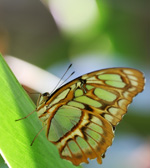 |
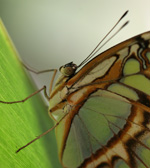 |
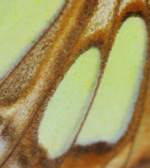 |
|
Siproeta Stelenes |
Close-up |
Wings |
I couldn’t agree with this notion. I felt that patience is required when doing something that one doesn’t like, e.g. dealing with bawling children or negotiating ugly politics at work.
Patience is the ability to endure waiting, delay, or provocation without becoming annoyed or upset, or to persevere calmly when faced with difficulties. – Wikipedia.
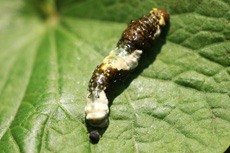 |
|
Papilio Cresphonles Larva |
But we love working with our specialty lenses; its not a “delay” or a “provocation”. When you enjoy doing something that could take a long time and may or may not produce great results, does that qualify as requiring patience? I felt that if it weren’t technically complicated, macro photography would lose something. I only discovered that I liked driving when we bought a car with a stick shift. As in driving with a stick shift, the macro lens demands greater involvement from the user, hence giving better control.
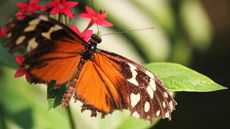 |
|
Unidentified butterfly |
I had initially been against Shreesh’s idea of buying not one but two difficult to use lenses – the Sigma 180mm macro and the Lensbaby 3G (for special effects). I was concerned that composing a technically difficult photo could be frustrating when pressed for time, e.g., on a hike. Then I had an epiphany. Why not remove those parameters that make it so? Unencumbered by time and by conflicting goals we could take all the time we wanted.
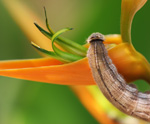 |
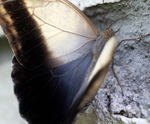 |
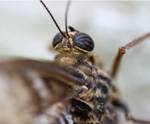 |
|
Caligo Eurilochus (Larva) |
Caligo Eurilochus |
Close-up |
We tested this out by going to the Japanese tea garden in San Francisco just to experiment with the lenses. It was a revelation. The very act of composing the photograph was delightful. Fiddling with the myriad adjustments in macro photography- ranging from the tactile adjustments of the various knobs on the ball head to the electronic adjustments on the camera – were almost necessary dues that had to be paid in return for the sudden revelation of hidden worlds that opened up before us. Even a simple flower was transformed into an object of wonder as the vague blur crystallized into previously invisible textures and features. We had discovered a new hobby.
For more pictures taken with the macro lens, click here.
Shreesh,
Amazing shots! Macro shooting does take a lot a time but looks great when you have the eye that you do!
What breath taking and beautiful photos of the larva and butterflies, the close-up are great!
Hi Shreesh & Neena,
The pictures of butterflies, larvae and the volcano lava are simply amazing. Your pursuit for excellence in all undertakings is remarkable. When I saw the pictures of the volcano, I felt like you were on another planet.
Good that you left unsafe territories of Guatemala behind. I wish you never visit that place again.
Talking about butterflies, there is a big butterfly garden in Costa Rica that we visited during our vacation. It has several trees/bushes that are specifically planted for the unique species of butterflies. They also have a laboratory with various live butterflies at different stages of metamorphosis. You may find it very interesting.
Aai
Reviewing the pictures and the techniques we used, we already have many ideas on how we can improve our picture taking. For example, most of our images were taken at f/3.5, there by significantly reducing the depth of field. We need to do more experimentation in that area, as well as getting the camera off the tripod for more active subjects.
Hopefully there will be many more opportunities to practise this craft!
You two plant the seed, water the plant, harvest the oranges, squeeze them real hard. And blogreaders like me get to enjoy the juice. Keep the pictures coming! 🙂
Such beautiful photos! Thank you for taking the time to share your experiences.